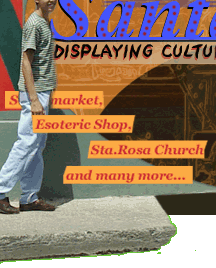|
Technology Overview
The project will research and further develop multimedia technologies as a
tool of creating the authentic mood and atmosphere of the Other.
Authenticity means of course that technology itself will not become an
artefact of exhibition - one of our main research interests is how to hide the methods of presentation from the visitor and use technology only as a transparent interface layer. Methods used include video projections, multichannel 3d audio, virtual acoustics and different kinds of sensors controlling the interaction of audiovisual elements.
Visual appearance of the exhibition is created mostly by traditional methods like prints and slide projections, technology being just a spice, although a crucial one. Video projections are used only in discrete locations like sideturns of the streets. This way technology not just only fits in the picture, but expands the physical limits of the space. The visitor may for example gaze sideways and see children dancing in a video projection of an alley.
Sound will be used as an important tool of immersion. A living, pulsing,
three dimensional soundscape with moving sound sources and virtual
acoustics is created with latest digital signal processing hardware,
Creamware Pulsar, and custom software. The software is developed for the project in collaboration with Audio Riders Ltd. The audio system is be capable of positioning multiple audio sources in a 3d listening space
created with up to 18 individual output channels. 18 of the sources can be physical inputs, e.g. microphones and all sources can be freely routed through DSP algorithms like auralization filters or reverberation. Microphone signals can also trigger sampled sounds or control the video presentations. An example of this is the entrance of the church, where the visitor hears his/her footsteps echo in the church.
Existing positional audio methods like vector panning [Pulkki 1997]
designed for conventional theatres and listening rooms will be used in the central plaza part. In addition to that, speakers are located along the
corridors of the museum so that for example a group of virtual Venezuelans can walk around, passing by visitors of the exhibition.
Computer controlling the audio environment of the exhibition as a whole is the only way to allow proper use of contrast and silence. One could for example hear the people heading for the church before a mass and then find him/herself alone on the beach, hearing only sounds of the sea mixed with low, muffled celebration from a distance.
Contact us
|












